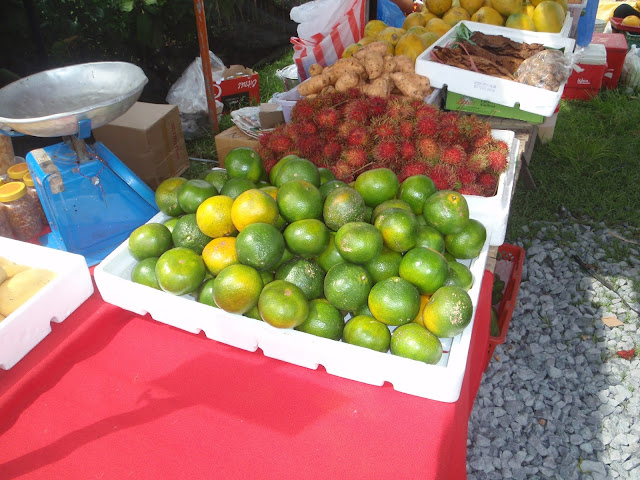Q. My oranges haven’t ripened on my two-year-old tree. Some are green and others yellowish with very hard skin and last year’s fruit wasn’t very sweet or soft. Should I cover them tonight? It will be freezing.
A. The fruit of many oranges attached to the tree are
damaged at temperatures of 30°F or a few degrees lower. The type or variety of sweet orange is highly
variable to freezing temperatures. If you think winter temperatures will drop
low enough for damage, then throw a sheet or blanket over the tree to protect
it from cold and wind.
Go outside at night and look at the sky. Clear skies are more likely to contribute to lower temperatures than cloudy skies. If there is wind combined with freezing temperatures, fruit damage is worse.
Your
oranges may not be ripe yet. Ripeness depends on the variety and when it’s
supposed to be harvested. Cold weather will get them to turn orange as they
ripen. Oranges grown in tropical climates never turn orange when they are ripe.
Consumers know this and their green color is acceptable. If they are ripe
enough, put them in a paper bag with a few ripe bananas for a day and they will
soon turn orange.
My guess
from their color is they should stay on the tree longer. If they are sweet,
they may handle some temperatures down to about 28F or so. Citrus grown in US
commercially are found in in Yuma, Arizona, Rio Grande Valley in Texas, mid to
south Florida and southern California. These places seldom freeze.
Ripe
fruit handles temperatures a couple of degrees lower than unripe fruit because
of their natural anti-freeze; higher sugar content. The sweeter the orange,
lower temperatures by a few degrees are needed to freeze them. If you want to
measure the sugar content, follow my blog and type in the word “refractometer”
in the search line.
Our
desert climate creates winter temperatures too low for growing and producing
citrus. You might have a couple of warm winters in a row followed by low winter
temperatures that may wipe out the citrus.
Will
citrus grow in Las Vegas? Some years, depending on where they are planted and your
choice in citrus. Will they produce fruit here? Sometimes, depending on when
they flower and the temperatures just before and after flowering.
Talk to
your neighbors and look around your neighborhood. If your neighbors were lucky
at growing oranges, you might have the same luck. Be suspicious of
neighborhoods that have no citrus growing in them at all. There might be a
weather and climate related reason for that or you might be the pioneer who
starts something.
Pay
attention to the type or variety of orange you have. You call yours an
“orange”. This orange has a name or variety besides just “orange”. These
different varieties of oranges flower and are harvested at different times.
Some perform better here than others.
The
“University of Arizona” published a fact sheet that you can retrieve online
called, “Low Desert Citrus Varieties”. If this link is broken, use your favorite search engine and type
in these words in quotations and look at the last two pages. This fact sheet
tells you the harvest time for different varieties of citrus. Avoid varieties
that are ready to harvest in the middle of December or later in the season.


No comments:
Post a Comment